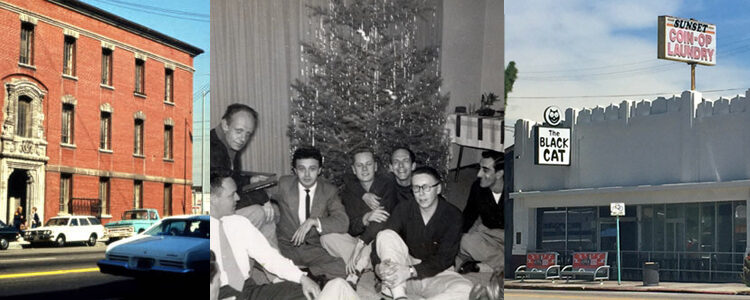
SurveyLA LGBT Historic Context Statement
Los Angeles has a rich – yet often overlooked – lesbian, gay, bisexual, and transgender (LGBT) heritage. As part of its multi-year survey of the city’s historic resources, the City of Los Angeles Office of Historic Resources (OHR) completed the country’s first historic context statement for places associated with this heritage.
Producing a historic context statement is an important first step in identifying and protecting significant places, providing a framework for their evaluation.
The SurveyLA LGBT Historic Context Statement represents a milestone in weaving the stories of lesbian, gay, bisexual, and transgender individuals into the overall history of Los Angeles.
Not intended as a complete history of LGBT Los Angeles, the document focuses on certain themes. Themes include The Gay Liberation Movement (1948-1980), LGBT Persons and Their Impact on the Entertainment Industry (1917-1980), Gay Bars as Social Institutions (1920-1980), Queer Art (1945-1980), and more.
The document also lists designated and potential historic resources that represent each theme—more than thirty places in all. Currently, The Black Cat in Silver Lake is the only location in the City of Los Angeles designated as a Historic-Cultural Monument (HCM) specifically for its association with LGBT history. The historic context statement uncovers places not previously known, allowing anyone to use this information to nominate other sites for HCM designation.
Amid the increasing national attention on LGBT civil rights issues, the SurveyLA LGBT Historic Context Statement sheds an important light on the pivotal role Los Angeles has played in LGBT culture and history.
The document also provides a model for other communities, giving this project a potentially enormous impact.
L.A. is home to many firsts in LGBT history – it was the site of the world’s first gay pride parade, the first gay synagogue, and the first sustained gay liberation group in the U.S. It is only appropriate that Los Angeles is now at the forefront of documenting and preserving this important yet often overlooked area of history.
The project earned a 2016 Conservancy Preservation Award.